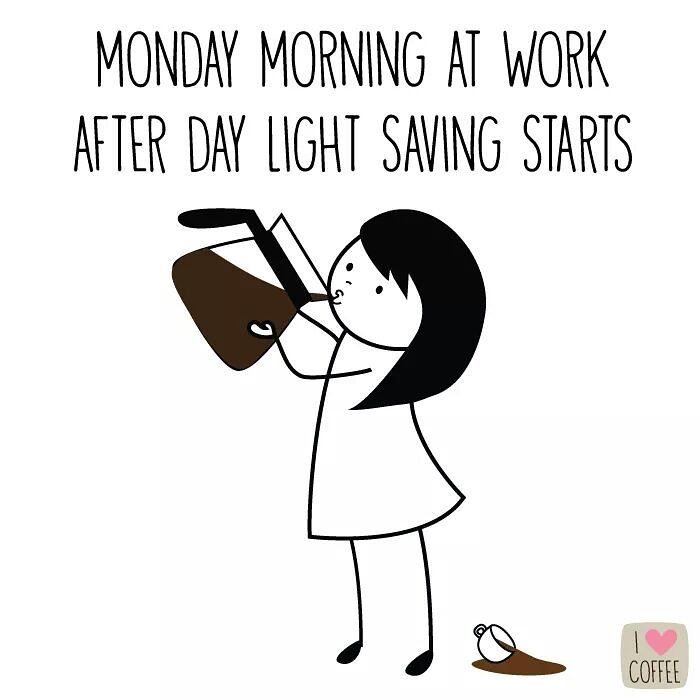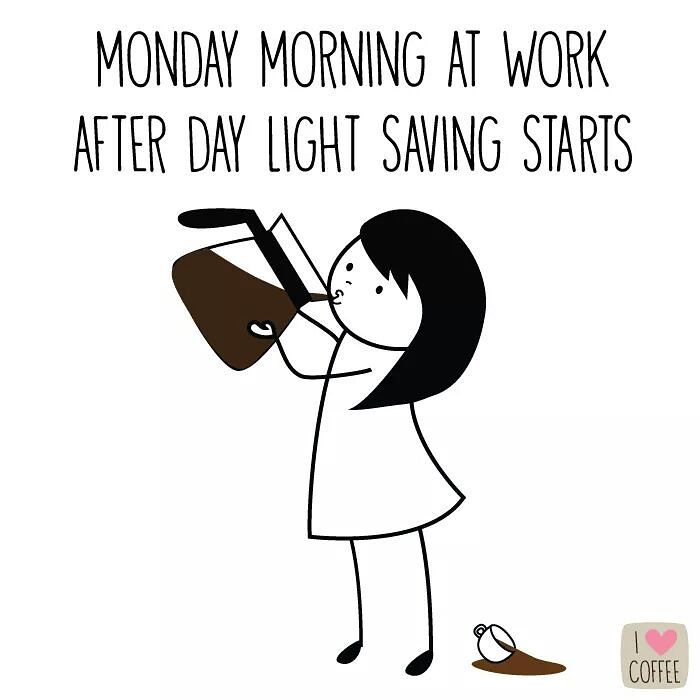
Survival of the Sleepiest
Falling back in time is a rough transition for many individuals and families. The internal body clock is out of whack and affects sleep . With an extra hour of sunlight, the morning is brighter with the sun setting on the way home from work for many Americans.
People’s circadian rhythm — the body’s internal clock — follows the sun and changes depending on where you live. It actually changes in four-minute intervals, exactly the time it takes for the sun to cross one line of longitude, explained to ABC news by Till Roenneberg of Ludwig-Maximilians-University in Munich, Germany.
The easiest to transition? Adults who are night owls or rise early in the morning. An extra hour does not detract their circadian rhythm as those with irregular sleeping patterns.
How Americans Adjust
To adjust accordingly, the National Sleep Foundation recommends slowly adjusting your sleep schedule by avoiding bright lights in the bedroom during the evening. Wait until the morning to expose sunlight as your bright light source.
Americans lose 40 minutes of sleep during spring dst versus fall. However, sleep disturbances of any kind can lead to a reduction in mood and productivity. Memory and concentration are affected along with behavior. With the sun setting on the way home from work, many individuals without sleep can suffer workplace injuries from light changes.
Another issue during daylight saving time are car wrecks. A 6 percent increase occurs in spring causing more than 300 deaths. In the fall, those who are visually impaired may suffer from a a dark commute home.
DST Preparedness Program
A few tips to prepare yourself for sleep:
- Create an oasis. One-third of the day is spent in the bedroom so make certain the bedroom is calm, airy, and soft. The right colors, bed sheets, white noise or music, and pillow can make or break the space. Dark curtains can help along with a low lighting option on the nightstand.
- Adjust the room’s temperature. Too cold or too hot will cause the body to wake at night. Ideal temperatures for sleeping is a temperature in the 60s. A programmable thermostat can help automatically adjust the house’s temperature to allow the body to adjust accordingly.
- Journal at bedtime. A lot of the issues surrounding sleep include anxiety or an active mind. If you feel like you are laying in bed thinking of everything you forgot to do or need to do the next day, journal or make a list. Remove the wall clock or alarm clock from your site and focus instead on what is making you anxious to fall asleep.
- Turn off the electronics. With 71 percent of Americans sleeping with their phone in bed or on the nightstand, the blue light from the screens can emitt unneeded light that prevents our brains from shutting down. Plug your phone in across the room; this can also help with hitting snooze too many times in the morning.
- Routines are not just for children. Establish a routine to calm the mind and body prior to sleeping. Essential oils can help relax mind along with an epsom salt bath. Try reading if your mind is scrambling and reduce caffeine to the afternoon.
The Kids are Alright
But what about your children? It is no secret kids thrive on consistency and routine but daylight savings time breaks the consistency.
- Gradually adapt the schedule for your children. If you move up bedtime by 10 to 15 minutes prior to their normal bedtime, they can slowly adjust.
- Routine is key. Do not break the routine even with the hour difference. Think about how your family schedule might need readjusted to maintain baths, stories, and bedtime lullaby.
- Remind your teens they need sleep. They can tell time and are more aware that dst is coming but teens are on a more irregular schedule with activities and homework. Stay on top of your teens to make certain they get their full 8+ hours of sleep.
- Darkness all year. Buy some blackout curtains to not only use in the summer sun but all year to keep the light consistent all year. A night light is ok but keep the hall lights to a minimum: once you start, you will have a hard time turning it off.
- Calm and cool. Like adults, children sleep better without hot pajamas and cool temperatures. A fan indirectly off their body can regulate temperature and provide white noise. Music can relax their minds and bodies to help aid sleep as well.
No matter how your family adjusts, the adjustments take a few weeks to take place. By allowing the routine to remain consistent and the environment calm versus chaotic, the whole family will hopefully sleep blissfully.
For some individuals including children leading up to daylight saving time, may blame sleepiness to the clock changes. If the problem sustains for more than a few weeks, the issue may be due to a sleep condition like sleep apnea. One sign would be snoring or falling asleep during the day: both can be attributed to a sleep condition.
Talk to your child’s pediatrician or your own family doctor for next steps. There are professionals who can aid in your fight with insomnia when the answer is not daylight saving time disturbances. Call the Alaska Sleep Clinic for a free 10 minute consultation.








